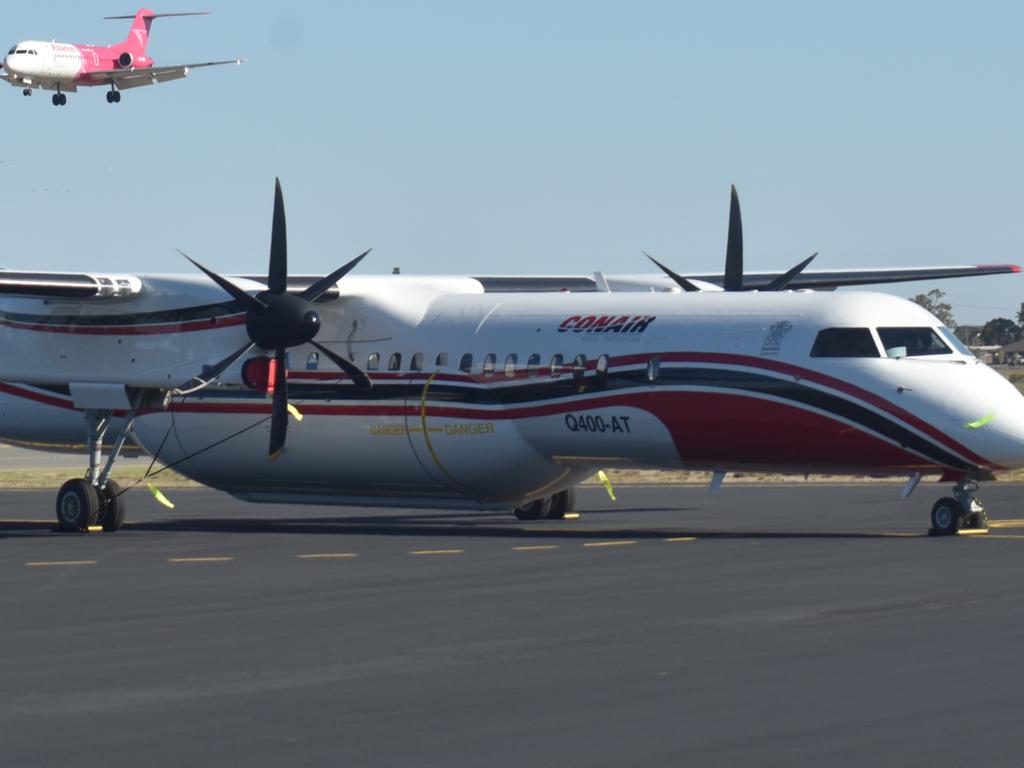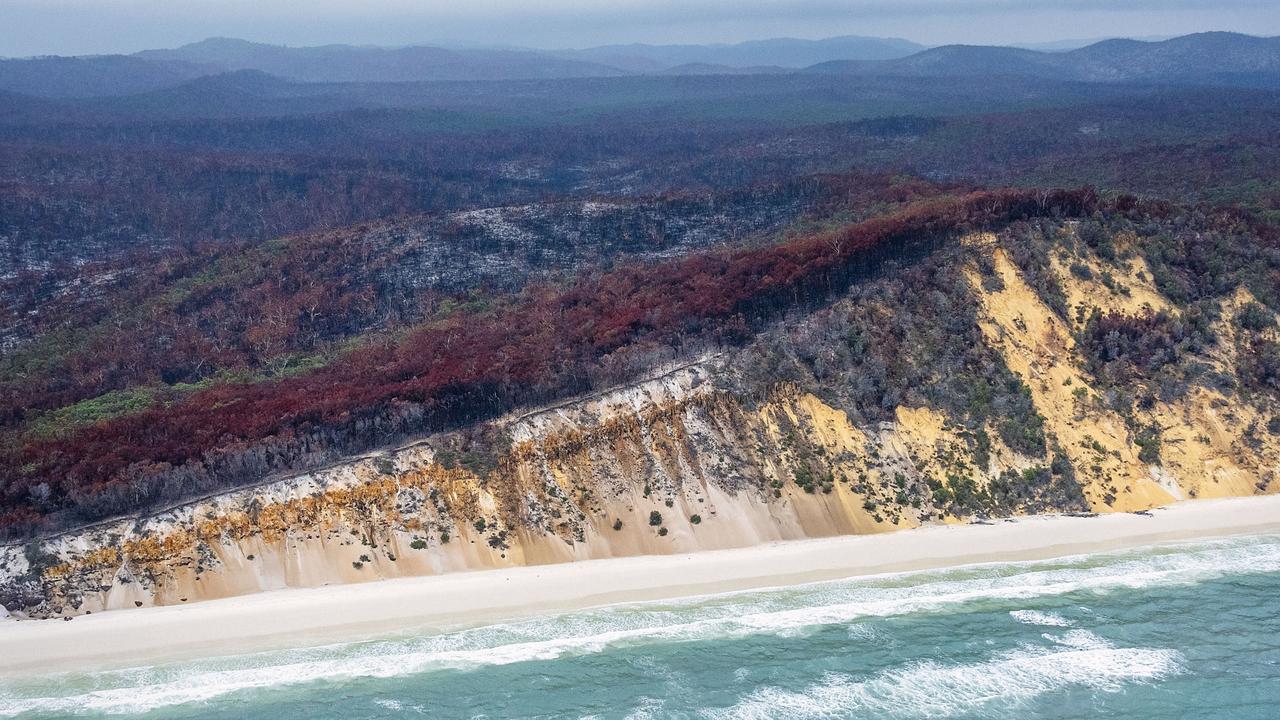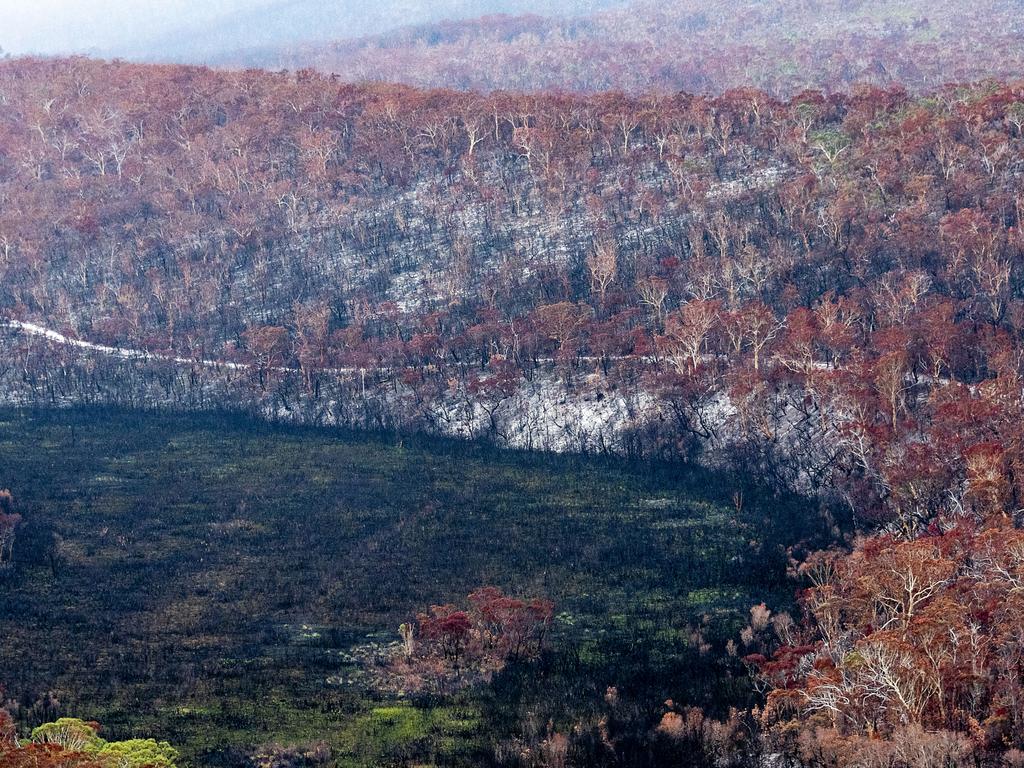‘Contract bungle’ costs five days of Fraser Island firefighting
The lease for Queensland’s now-infamous waterbombing aeroplane ran out while the Fraser Island bushfire was raging, but even if it was ready to fly, its crew wasn’t, it can be revealed.
QLD News
Don't miss out on the headlines from QLD News. Followed categories will be added to My News.
The lease for Queensland’s waterbombing plane ran out while the Fraser Island bushfire was raging and its specially trained crew were unable to fight the blaze for five days at a critical juncture due to a “contract bungle”.
The State Government was forced to negotiate not one but two emergency extensions on the lease for the Bundaberg-based Q400AT in order to continue to use the plane to fight the Fraser Island bushfire, with the initial contract covering just 84 days.
The aircraft, which Premier Anastacia Palasczuk gloated could be deployed at a moment’s notice, will only be available for another 10 days – until “last light” on December 19 – unless the contract is extended for a third time.
A clause in the same contract meant the aircraft’s specially trained crew of Canadian pilots and engineers were stood down for five-days and were unable to bomb the Fraser Island bushfire between November 24 and November 28.
During that time the fire escalated until guests and residents were told to leave and the island was closed to new visitors.
The air tanker’s crew is usually allowed to work 35 days without a break, but because of COVID-19 the government was unable to bring in an international pilots as replacements.
In parliament last week, Fire and Emergency Minister Mark Ryan said the plane was used on November 28, after receiving advice from QFES.
QFES confirmed yesterday the plane was not used on November 28, but returned to service on November 29.

It’s understood the plane was grounded on November 23, in an effort to renew its contract.
The pilots were “stood down” for five days while the Fraser Island burned, as the State Government renegotiated a contract for the plane with Canadian authorities.
The plane was not operational again until November 29.
Flight tracking data, published online, also confirms the plane was not used between November 24 and 29.
“This contract bungle has exposed Mark Ryan’s gross negligence and his credibility is in absolute tatters,” Opposition fire and emergency spokesman Dale Last said.
The state’s initial lease of the aircraft covered just 84 days, from September 1 until November 23, as part of a $15 million five-year deal.

The remaining four years of the contract are still to be negotiated.
The Courier-Mail last week revealed the plane sat idle for 34 days in Bundaberg as the Fraser Island bushfire raged and was not tasked to the fire until November 17.
“Just one month before the election campaign the Premier bragged that the water bomber could be used at a moments notice,” Mr Last said.
The State Government announced the Large Air Tanker in a statement on September 16, saying it would “bolster the state’s aerial firefighting capabilities over the next five years”.
“This 10,000 litre aircraft will ensure our communities are protected – from this bushfire season and well into the future,” Premier Annastacia Palaszczuk said.
A spokesman for Mr Ryan said: “The Minister’s statement (in parliament) was based on written advice from Queensland Fire and Emergency Services (QFES) at the time.”

“Subsequently, QFES was asked to provide a comprehensive written brief on the use of the LAT, signed off by the Commissioner, so that the Minister can correct the parliamentary record at the first opportunity at Estimates,” the spokesman said.
“That being said, QFES has advised that the LAT was used repeatedly during the week in question.
“QFES has advised that the LAT was used 22 times in the week ending December 6, dropping 220,000 litres of retardant gel and water.
“Because the end date of each bushfire season varies from year to year, the contract for the LAT can be extended by QFES.
“That’s precisely what has happened this year and it’s why the LAT is still here.
“It’s important to note that Queensland’s bushfire season typically occurs in the spring months leading up to the summer wet season.
“The use of the LAT is an operational decision for firefighters.”





